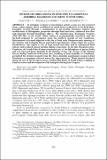Files in this item
Intraplate orogenesis in response to Gondwana assembly : Kwangsian Orogeny, South China
Item metadata
| dc.contributor.author | Xu, Ya-Jun | |
| dc.contributor.author | Cawood, Peter A. | |
| dc.contributor.author | Du, Yuan-Sheng | |
| dc.date.accessioned | 2016-06-22T16:30:04Z | |
| dc.date.available | 2016-06-22T16:30:04Z | |
| dc.date.issued | 2016-04 | |
| dc.identifier | 243428265 | |
| dc.identifier | fdd5b580-8ea9-47f2-964f-fc51a4c6ac36 | |
| dc.identifier | 84969930485 | |
| dc.identifier | 000376538500002 | |
| dc.identifier.citation | Xu , Y-J , Cawood , P A & Du , Y-S 2016 , ' Intraplate orogenesis in response to Gondwana assembly : Kwangsian Orogeny, South China ' , American Journal of Science , vol. 316 , no. 4 , pp. 329-362 . https://doi.org/10.2475/04.2016.02 | en |
| dc.identifier.issn | 0002-9599 | |
| dc.identifier.other | RIS: urn:F690045EE7BBFD0565BB9C22F2B62867 | |
| dc.identifier.uri | https://hdl.handle.net/10023/9039 | |
| dc.description | This work was supported by the National Natural Science Foundation of China (Grant No. 41472086, 41272120), the fundamental Research Funds for the Central Universities, China University of Geosciences (Wuhan). The first author also acknowledges China Scholarship Council (Grant No. 201208420001) for supporting his research in the University of St Andrews. PAC acknowledges support from NERC grant NE/J021822/1. | en |
| dc.description.abstract | In intraplate orogens tectonothermal activity occurs at a site removed from a plate margin and is considered to result from localization of far-field plate-boundary stresses through a combination of pre-existing structural features and modification of lithospheric properties through fluid alteration, enhanced heat flow and potential thermal blanketing effects. The mid-Paleozoic Kwangsian Orogeny (460–400 Ma) in the South China Craton is geodynamically associated with the far-field response to convergence along the northern margin of east Gondwana. Deformation is focused adjacent to the site of both early Neoproterozoic suturing of the Yangtze and Cathaysia blocks and mid-Neoproterozoic rifting within the craton. Furthermore, this region is one of high crustal heat flow and of widespread fluid release and localized crustal melting during orogenesis. In the late Neoproterozoic-Cambrian, the South China Craton constituted part of the lithosphere of greater India and was separated from Australia by the Kuunga Ocean. The closure of the Kuunga Ocean during Cambrian-Ordovician time, resulting in final assembly of Gondwana, permitted the stresses sourced from the Terra Australis accretionary orogen in East Gondwana to propagate inboard across the supercontinent. These stresses localized along the site of the Neoproterozoic Nanhua Rift Basin of South China resulting in basin inversion and development of the intraplate Kwangsian Orogeny. | |
| dc.format.extent | 34 | |
| dc.format.extent | 5405422 | |
| dc.language.iso | eng | |
| dc.relation.ispartof | American Journal of Science | en |
| dc.subject | Intraplate | en |
| dc.subject | Kwangsian Orogeny | en |
| dc.subject | South China | en |
| dc.subject | Kuungan Orogeny | en |
| dc.subject | Assembly of Gondwana | en |
| dc.subject | GE Environmental Sciences | en |
| dc.subject | DAS | en |
| dc.subject.lcc | GE | en |
| dc.title | Intraplate orogenesis in response to Gondwana assembly : Kwangsian Orogeny, South China | en |
| dc.type | Journal article | en |
| dc.contributor.sponsor | NERC | en |
| dc.contributor.institution | University of St Andrews. Earth and Environmental Sciences | en |
| dc.contributor.institution | University of St Andrews. School of Geography and Geosciences | en |
| dc.contributor.institution | University of St Andrews. Scottish Oceans Institute | en |
| dc.contributor.institution | University of St Andrews. St Andrews Isotope Geochemistry | en |
| dc.identifier.doi | https://doi.org/10.2475/04.2016.02 | |
| dc.description.status | Peer reviewed | en |
| dc.identifier.grantnumber | NE/J021822/1 | en |
This item appears in the following Collection(s)
Items in the St Andrews Research Repository are protected by copyright, with all rights reserved, unless otherwise indicated.

